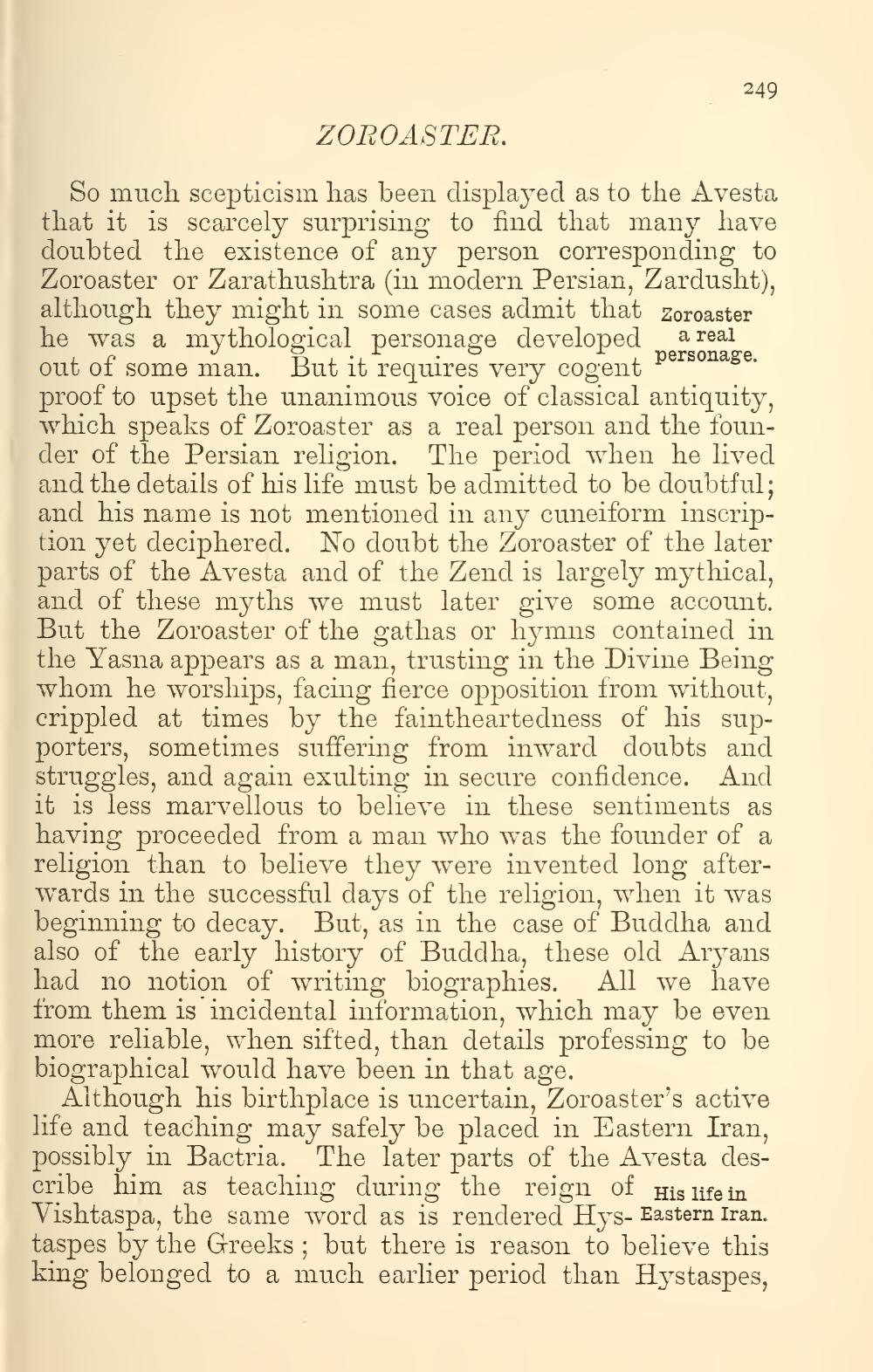________________
249
ZOROASTER.
So much scepticism has been displayed as to the Avesta that it is scarcely surprising to find that many have doubted the existence of any person corresponding to Zoroaster or Zarathushtra (in modern Persian, Zardusht), although they might in some cases admit that Zoroaster he was a mythological personage developed a real
personage. out of some man. But it requires very cogent persoa proof to upset the unanimous voice of classical antiquity, which speaks of Zoroaster as a real person and the founder of the Persian religion. The period when he lived and the details of his life must be admitted to be doubtful; and his name is not mentioned in any cuneiform inscription yet deciphered. No doubt the Zoroaster of the later parts of the Avesta and of the Zend is largely mythical, and of these myths we must later give some account. But the Zoroaster of the gathas or hymns contained in the Yasna appears as a man, trusting in the Divine Being whom he worships, facing fierce opposition from without, crippled at times by the faintheartedness of his supporters, sometimes suffering from inward doubts and struggles, and again exulting in secure confidence. And it is less marvellous to believe in these sentiments as having proceeded from a man who was the founder of a religion than to believe they were invented long afterwards in the successful days of the religion, when it was beginning to decay. But, as in the case of Buddha and also of the early history of Buddha, these old Aryans had no notion of writing biographies. All we have from them is incidental information, which may be even more reliable, when sifted, than details professing to be biographical would have been in that age.
Although his birthplace is uncertain, Zoroaster's active life and teaching may safely be placed in Eastern Iran, possibly in Bactria. The later parts of the Avesta describe him as teaching during the reign of His life in Vishtaspa, the same word as is rendered Hys- Eastern Iran. taspes by the Greeks; but there is reason to believe this king belonged to a much earlier period than Hystaspes,




